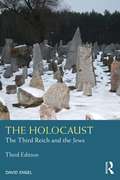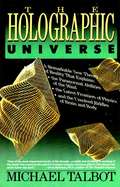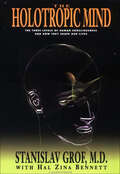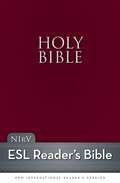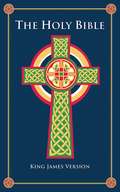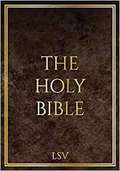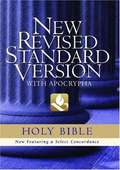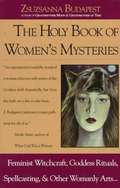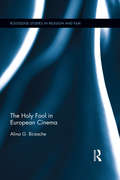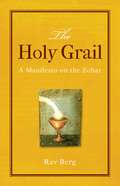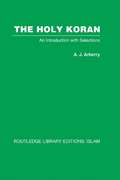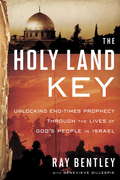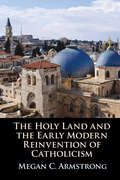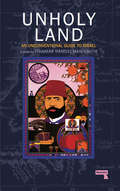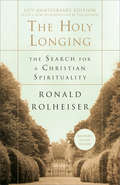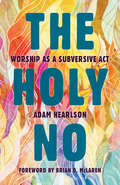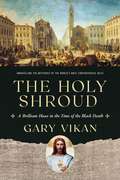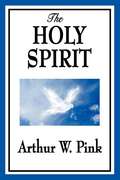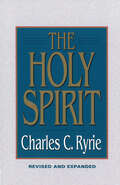- Table View
- List View
The Holocaust: The Third Reich and the Jews (Seminar Studies)
by David EngelThis book offers a survey of the encounter between the Third Reich and European Jewry. Pointing out the difficulties historians face in interpreting the ever-expanding documentary record, it includes treatment of the role of non-Germans in the Holocaust, consideration of the much-debated nexus between the Holocaust and modernity, and discussion on how 'the Holocaust' developed as a distinct historical topic. Fully updated, this new third edition incorporates the latest scholarly findings with expanded treatment of gendered aspects of the Holocaust, the Holocaust’s world historical contexts, the long-term history of Jewish-Christian relations, and thinking about the Holocaust’s contemporary relevance, as well as additional documents reflecting recent archival discoveries. Offering a concise narration that appeals to both the intellect and the emotions, the book enables students to gain a real understanding of the events of this catastrophic time. Including a useful selection of original documents (many never before anthologised in English), a chronology, glossary, and 'who’s who', David Engel’s book will be welcomed by anyone trying to get to grips with this complex and far-reaching subject.
The Holographic Universe
by Michael TalbotThese relatively new data are of such far-reaching relevance that they could revolutionize our understanding of the human psyche, of psychopathology, and of the therapeutic process. Some of the observations transcend in their significance the framework of psychology and psychiatry and represent a serious challenge to the current Newtonian-Cartesian paradigm of Western science. They could change drastically our image of human nature, of culture and history, and of reality.
The Holotropic Mind: The Three Levels of Human Consciousness and How They Shape Our Lives
by Hal Zina Bennett Stanislav Grof“An exceptionally clear and readable introduction to the evolving psychology of the spirit, transpersonal psychology” from the renowned psychiatrist (Charles T. Tart, PhD, author of Mind Science).A turning point in psychology and human history . . . Loaded with case studies which present a unified model of human consciousness—a revolutionary map of the mind that explains our evolution, behavior, personality, and the mind-body connection—this work takes readers on a compelling journey into the mind, human behavior, and future of humankind.“If you want to know about the psychology of the future today, read this book. It is about a revolution in our understanding of the mind that is as far-reaching in psychology as the idea of the quantum was to physics.” —Fred Alan Wolf, PhD, author of Taking the Quantum Leap“Grof marshals an impressive array of data and speculation in support of the timely demand that Western science acknowledge consciousness and its many non-ordinary states.” —Ram Dass
The Holy Bible for ESL Readers (NIrV)
by ZonderkidzThis Bible is perfect for ESL readers. The New International Reader’s Version (NIrV) is a true translation of the entire Bible that was adapted with care from the bestselling New International Version (NIV). The NIrV is written at a third grade reading level and uses short sentences and simple words. This Bible is perfect for those learning to read English. Features include: • The complete New International Reader’s Version • Presentation page for personalization and gift giving • Bible dictionary to help with unfamiliar words • “Three Ways to Read the Bible” – Explains how to read the Bible by story, subject, or person • “About the Bible” – Describes how the Bible was written and how it came to us • “Life in New Testament Times” – Describes what life was like when Jesus was on earth • “The ABCs of Salvation” – Helps explain the way of salvation
The Holy Bible: King James Version (Leather-bound Classics)
by Paul Gustave Dore Richard RothschildThe editors of Canterbury Classics have chosen to print the King James version of the Holy Bible, which contains both the Old and New Testaments. The Holy Bible was first copied by scribes and, because of its length and the time it took to hand write each book, only the elite had a copy. It wasn't until the 1440s when Johannes Gutenberg invented his revolutionary printing press that the first printing of the Bible made copies available to the lower class. Only forty-eight copies of Gutenberg's original Latin print run exist, and they are considered to be the most valuable books in the world.- This beautiful leather-bound edition comes with luxurious endpapers, gilded edges, illustrated interior, and a ribbon bookmark.- The Holy Bible is the world's best-selling book, to date.The Holy Bible is a divinely inspired book that transcends time.
The Holy Bible: Literal Standard Version (LSV) 2020
by Covenant Press Covenant Christian CoalitionA modern, literal, word-for-word (formal equivalence) English translation of the Holy Scriptures utilizing English word rearrangement when necessitated for readability. The LSV is the most literal translation of The Holy Bible, with significant improvement over previous literal translations, including Robert Young's excellent Young's Literal Translation. <P><P>The first edition of the LSV is offered as a high-quality 7" x 10" paperback with handsome matte finish, and thick, classic-looking cream pages, with full book, chapter, and verse numbering. Book headers and page numbers are included on all pages for easy navigation and elegant 9-point Times New Roman font is used throughout. The LSV is published by Covenant Press, the publishing arm of the Covenant Christian Coalition.
The Holy Bible: New Revised Standard Version With Apocrypha
by OxfordThe New Revised Standard Version (NRSV) is the most accurate and accessible Bible translation available today, and has been accepted by almost all major US denominations. Prepared by a multidenominational committee of scholars who based their translation on the original Hebrew, Greek, and Aramaic texts, the NRSV is also the most sensitive text on the topic of inclusive language. It includes the most complete collection of the Apocryphal/Deuterocanonical books.
The Holy Book of Women's Mysteries
by Zsuzsanna E. BudapestThe Holy Book of Women's Mysteries is essential for Pagans, feminists, and women seeking to learn more about the spiritual path as it relates to the feminine and the Goddess aspects of witchcraft and Wicca. This book is not about reinstating a matriarchy or tearing down patriarchy; it is about women's spirituality and its relationship with politics and lifestyle. Z. Budapest is one of the founding mothers of modern women's witchcraft, beginning with the establishment of Susan B. Anthony Coven in Los Angeles in 1971. She catapulted herself into the media spotlight when she was tried as a witch and found guilty in 1975 after being arrested on Venice Beach for reading tarot cards. She fought the charges and, after a nine year battle, won the right for every tarot reader to do so legally. The Holy Book of Women's Mysteries is a seminal text that contains invaluable information on Dianic witchcraft and spells, including everyday magick, sabbat rituals, and divination methods; a section on how vegetarian theories and politics relate to witchcraft and the feminine aspect; and a good deal of information on goddesses and how the patriarchal religions distorted old myths to serve their own needs. There are several unique and beautiful Rites of Passage for women and men that you don't often find, and Budapest's personal life stories are an equally valuable read, from her escape across the mountains from Communist Hungary to her fight for women's religious freedom upon moving to America.
The Holy City of Medina
by Harry MuntThis is the first book-length study of the emergence of Medina, in modern Saudi Arabia, as a widely venerated sacred space and holy city over the course of the first three Islamic centuries (the seventh to ninth centuries CE). This was a dynamic period that witnessed the evolution of many Islamic political, religious and legal doctrines, and the book situates Medina's emerging sanctity within the appropriate historical contexts. The book focuses on the roles played by the Prophet Muḥammad, by the Umayyad and early Abbasid caliphs and by Muslim legal scholars. It shows that Medina's emergence as a holy city, alongside Mecca and Jerusalem, as well as the development of many of the doctrines associated with its sanctity, was the result of gradual and contested processes and was intimately linked with important contemporary developments concerning the legitimation of political, religious and legal authority in the Islamic world.
The Holy Epistle to the Galatians
by D. Thomas Lancaster[Back Cover]: "Bible readers generally understand Galatians as Paul's dissertation against the Torah and against Judaism. More than any other book of the New Testament, Galatians defines the line between Messianic Judaism and greater Christianity.Paul was a prodigy educated in the most elite schools of Pharisaism. He wrote and thought from that Jewish background, rendering several key passages of his work incomprehensible to readers unfamiliar with rabbinic literature. This collection of sermons on a Messianic Jewish approach to Galatians opens Paul's world and provides the historical Jewish context necessary to decipher the epistle. In an easy-to-read, narrative style, Torah Club author D. Thomas Lancaster takes his readers from one end of the epistle to the other, challenging conventional interpretations and offering new insights to reveal the Jewish Paul."
The Holy Fool in European Cinema (Routledge Studies in Religion and Film)
by Alina G. BirzacheThis monograph explores the way that the profile and the critical functions of the holy fool have developed in European cinema, allowing this traditional figure to capture the imagination of new generations in an age of religious pluralism and secularization. Alina Birzache traces the cultural origins of the figure of the holy fool across a variety of European traditions. In so doing, she examines the critical functions of the holy fool as well as how filmmakers have used the figure to respond to and critique aspects of the modern world. Using a comparative approach, this study for the first time offers a comprehensive explanation of the enduring appeal of this protean and fascinating cinematic character. Birzache examines the trope of holy foolishness in Soviet and post-Soviet cinema, French cinema, and Danish cinema, corresponding broadly to and permitting analysis of the three main orientations in European Christianity: Orthodox, Catholic, and Protestant. This study will be of keen interest to scholars of religion and film, European cinema, and comparative religion.
The Holy Grail
by Rav BergThe Holy Grail is a mystical legend that dates back before Christianity. It is often described as a cup, dish, or bowl made of earth or wood. Some references describe it as the vessel of the Last Supper. Believed to have mystical and magical influences, the Holy Grail is widely known as possessing the ability to endow infinite knowledge and power upon the person who has earned the right to discover it through spiritual work.Kabbalists explain the terms vessel and earth are code words that refer to humanity's desire and ability to draw the radiance of the Creator into this physical world. The Zohar, which means "splendor," is believed to contain the concealed Light of the Creator that has been saved for a meritorious generation to reveal it. The Zohar itself explains that our generation in the Age of Aquarius will be able to bring about the end of pain and suffering, but we will need the Light of the Zohar to banish the darkness and usher in a time of peace and goodwill for all.In 1922, when Rav Ashlag opened The Kabbalah Centre, the Zohar was only available to a select few people in the entire world, after centuries of being hidden away. When Rav Berg was handed The Centre's leadership in 1969, he risked everything to make this secret book available to anyone anywhere who had a desire to use it as a tool for spiritual transformation. Here in this unique short form, Rav Berg explains what the kabbalists have said for centuries-the Zohar is the Holy Grail. In clear modern language he explains how the Zohar can empower anyone, with an open mind and an open heart, who studies from its pages to leap from the world where we experience ups and downs, good and evil, to a parallel universe in which all is good.
The Holy Koran: An Introduction with Selections
by A.J. ArberryDespite being revered as the Holy Book by Muslims throughout the world, the Koran is the least known and least understood in the West of all the great religious books. In this volume A J Arberry examines this paradox and explains the qualities of the Koran which have made it acceptable to so many people. The selections have been chosen and arranged to illustrate the religious and ethical message of the Koran.
The Holy Land Key
by Genevieve Gillespie Ray BentleyDon't Just Read Prophecy. Step into Its Fulfillment. The study of prophecy inspires elaborate timelines and speculation about which world leader might rise to power in the last days. But meanwhile, it's far too easy to miss the significant prophetic signs contained in stories of biblical characters, in God's creation, and in the lives and actions of today's Israelis and Palestinians. The Holy Land Key opens our eyes to little-known aspects of prophecy, including: · God's master plan revealed in the seven Feasts of the Lord · The ingathering of God's people, and the ways Israelis are hearing from God today · Significant prophetic patterns discovered in the lunar cycle · Awe-inspiring testimonies to God's glory spelled out in the night sky · Glimpses of God's future kingdom revealed in the stories of well-known figures from Scripture For decades, author and pastor Ray Bentley has partnered with God's people in Israel, including Judea and Samaria, the area known as the West Bank. There, he witnesses the fulfillment of prophecy firsthand. This is your introduction to prophetic signs that God reveals in sometimes unexpected ways. He does not want us to miss the work he is doing to usher in the coming Kingdom.From the Trade Paperback edition.
The Holy Land and the Early Modern Reinvention of Catholicism
by Megan C. ArmstrongA shared biblical past has long imbued the Holy Land with special authority as well as a mythic character that has made the region not only the spiritual home for Muslims, Christians, and Jews, but also a source of a living sacred history that informs contemporary realities and religious identities. This book explores the Holy Land as a critical site in which early modern Catholics sought spiritual and political legitimacy during a period of profound and disruptive change. The Ottoman conquest of the region, the division of the Western Church, Catholic reform, the integration of the Mediterranean into global trading networks, and the emergence of new imperial rivalries transformed the Custody of the Holy Land, the venerable Catholic institution that had overseen Western pilgrimage since 1342, into a site of intense intra-Christian conflict by 1517. This contestation underscored the Holy Land's importance as a frontier and center of an embattled Catholic tradition.
The Holy Land: Contemporary Visions and Scriptures
by Ithamar Handelman SmithA collection of photographic and written essays about the place some have described as the most fought-over parcel of land in human history. Contemporary Visions and Scriptures seeks dialogue with the ancient lands and modern visions of the people who inhabit these sacred spaces, and the burgeoning contradictions of their daily lives, furthermore it attempts to address and liberate a complex, profound relationship between man and territory since the beginning of time, and nowhere is this dynamic more prescient than in the Holy Land.
The Holy Longing: The Search for a Christian Spirituality
by Ronald RolheiserRolheiser does not assume that the reader is conversant with the language of the Church, nor does he insult the reader's intelligence. He presents the aspects of faith in God in a readable of friendly way. He covers the mysteries, the elements of worship, and the average person's struggles to be churched in a straightforward manner. This is a must read for those who want to make converts and for those who think they might want to be converted. Although the author's perspective is Roman Catholic, his explanations are useful in any nondenominational or denominational setting.
The Holy Longing: The Search for a Christian Spirituality
by Ronald RolheiserRonald Rolheiser makes sense of what is frequently a misunderstood word: spirituality. In posing the question "What is spirituality?" Father Rolheiser gets quickly to the heart of common difficulties with the subject, and shows through compelling anecdotes and personal examples how to channel that restlessness, that deep desire, into a healthy spirituality.This book is for those searching to understand what Christian spirituality means and how to apply it to their own lives. Rolheiser explains the nonnegotiables--the importance of community worship, the imperatives surrounding social action, the centrality of the Incarnation, the sustenance of the spiritual life--and how spirituality necessarily impacts every aspect of human experience. At the core of this readable, deeply revealing book is an explanation of God and the Church in a world that more often than not doubts the credibility of both.From the Hardcover edition.
The Holy No: Worship as a Subversive Act
by Brian D. McLaren Adam HearlsonIn this book Adam Hearlson argues that Christians can say a holy “no” to oppression and injustice through the church’s worship practices. “To speak the holy no,” Hearlson says, “is to refuse to be complicit in the oppression and violence of the ruling power. It is the courageous critique of the present and its claims of immutability.”Hearlson draws widely from Christian history to uncover ways the church has used its traditional practices—preaching, music, sacrament, and art—to sabotage oppressive structures of the world for the sake of the gospel. He tells the stories of particular subversive strategies both past and present, including radical hospitality, genre bending, coded speech, and apocalyptic visions.Blending history, theory, and practice, The Holy No is both a testament to the courage of Christians who came before and an encouragement to take up their mantle of faithful subversion.
The Holy No: Worship as a Subversive Act
by Adam HearlsonIn this book Adam Hearlson argues that Christians can say a holy &“no&” to oppression and injustice through the church&’s worship practices. &“To speak the holy no,&” Hearlson says, &“is to refuse to be complicit in the oppression and violence of the ruling power. It is the courageous critique of the present and its claims of immutability.&”Hearlson draws widely from Christian history to uncover ways the church has used its traditional practices—preaching, music, sacrament, and art—to sabotage oppressive structures of the world for the sake of the gospel. He tells the stories of particular subversive strategies both past and present, including radical hospitality, genre bending, coded speech, and apocalyptic visions.Blending history, theory, and practice, The Holy No is both a testament to the courage of Christians who came before and an encouragement to take up their mantle of faithful subversion.
The Holy Reich
by Richard Steigmann-GallAnalyzing the previously unexplored religious views of the Nazi elite, Richard Steigmann-Gall argues against the consensus that Nazism as a whole was either unrelated to Christianity or actively opposed to it. He demonstrates that many participants in the Nazi movement believed that the contours of their ideology were based on a Christian understanding of Germany's ills and their cure. A program usually regarded as secular in inspiration - the creation of a racialist 'people's community' embracing antisemitism, antiliberalism and anti-Marxism - was, for these Nazis, conceived in explicitly Christian terms. His examination centers on the concept of 'positive Christianity,' a religion espoused by many members of the party leadership. He also explores the struggle the 'positive Christians' waged with the party's paganists - those who rejected Christianity in toto as foreign and corrupting - and demonstrates that this was not just a conflict over religion, but over the very meaning of Nazi ideology itself.
The Holy Shroud: A Brilliant Hoax in the Time of the Black Death
by Gary VikanA towering figure in the art world unravels the mystery of the world&’s most controversial relic.The history of the Christian church is strewn with holy relics and artifacts, none more controversial than the Shroud of Turin, the supposed burial cloth of Christ. In The Holy Shroud Gary Vikan shows that the shroud is not the burial cloth of Jesus, but rather a photograph-like body print of a medieval Frenchman created by a brilliant artist serving the royal court in the time of the Black Death. It was gifted by King John II to his friend Geoffroi de Charny, the most renowned knight of the Middle Ages, who shortly thereafter died at the disastrous Battle of Poitiers while saving the King&’s life. Though intended as nothing more than an innocuous devotional image for Geoffroi&’s newly-built church in the French hamlet of Lirey, it was soon misrepresented. Miracles were faked, money was made.Combining copious research and decades of art world experience with an accessible, wry voice, Gary Vikan shows how one of the greatest hoaxes in the history of Christian relics came into being.
The Holy Spirit
by Arthur W. PinkWherever Christianity has been a living power, the doctrine of the Holy Spirit has uniformly been regarded, equally with the Atonement and Justification by faith, as the article of a standing or falling church. The distinctive feature of Christianity as it addresses itself to man's experience, is the work of the Spirit, which not only elevates it far above all philosophical speculation, but also above every other form of religion. That the Holy Spirit is to be publicly owned and equally honored with the Father and the Son is very evident from the terms of the great commission, "Go ye therefore, and teach all nations, baptizing them in the name of the Father, and of the Son, and of the Holy Spirit."
The Holy Spirit
by Charles C. RyrieAll students of Scripture can benefit from this concise, practical study of the person and work of the Holy Spirit. All the doctrinal essentials are here, clearly organized and explained by the renowned scholar who prepared the Ryrie Study Bible. Avoiding confusion and trendiness, Dr. Ryrie sticks uncompromisingly to the revealed Word of God to answer questions such as: What is Spirit baptism? What is the sin against the Holy Spirit? What does it mean to be filled with the Spirit? What about the spiritual gift of tongues? What is true spiritual power? This revised and expanded edition includes: Two new chapters on contemporary issues related to the doctrine of the Holy Spirit, new overview charts-bird's-eye views of complex issues, handy subject and scripture indexes for quick reference, and an updated selected bibliography for further study.
The Holy Spirit
by Charles C. RyrieAll students of Scripture can benefit from this concise, practical study of the person and work of the Holy Spirit. All the doctrinal essentials are here, clearly organized and explained by the renowned scholar who prepared the Ryrie Study Bible. Avoiding confusion and trendiness, Dr. Ryrie sticks uncompromisingly to the revealed Word of God to answer questions such as: What is Spirit baptism? What is the sin against the Holy Spirit? What does it mean to be filled with the Spirit? What about the spiritual gift of tongues? What is true spiritual power? This revised and expanded edition includes: Two new chapters on contemporary issues related to the doctrine of the Holy Spirit, new overview charts-bird's-eye views of complex issues, handy subject and scripture indexes for quick reference, and an updated selected bibliography for further study.
